December 17th, 2013

For business and even personal use, the cloud is earning the trust of more and more users. But, privacy and security remain major concerns. Victoria Ivey of CIO published a list of ways to maintain better security with the cloud, which mostly involve more diligence from users.
There are a seemingly endless number of options for how to use the cloud, but it’s not for everything. When it comes to storing data, your most valued, vital, important files should probably stay away. Cloud storage isn’t particularly insecure, but it doesn’t provide enough security for the data you absolutely cannot afford to lose.
Perhaps the most disregarded document in history is the user agreement. For cloud storage solutions, however, it’s necessary to wade through them. They contain important information about what your cloud provider offers and what level of protection you’re afforded. If you’d rather not read it, take some time to talk to your provider in-depth about the services. Knowing the details of your cloud service will help you use it better.
Passwords are a respectable security tool when used correctly. Unfortunately, most users insist on using a password they can easily remember and use no other considerations. This makes a password easily hackable. This doesn’t only apply to the cloud, but strong passwords are a must for every online account.
For added cloud security, use encryption on all data stored there. This way, if a third party does gain access to your cloud storage, there will be another layer of security in place to keep them from stealing data. There are a number of ways to encrypt files and some cloud providers will include encryption with your service. There have been cases where cloud providers have decrypted users’ data, however and allowed access to other parties. So, be cautious when choosing a provider and don’t blindly trust encryption services unless you’re the only one holding the key.
These are some basic, general tips for improved security with cloud computing. Research your provider and the services you’re signing up for and make sure you understand how the cloud works and how to best use it.
To find out what the cloud can do for you, call Geek Rescue at 918-369-4335. We offer a variety of cloud services and help you understand how the cloud is best utilized by your business.
December 11th, 2013
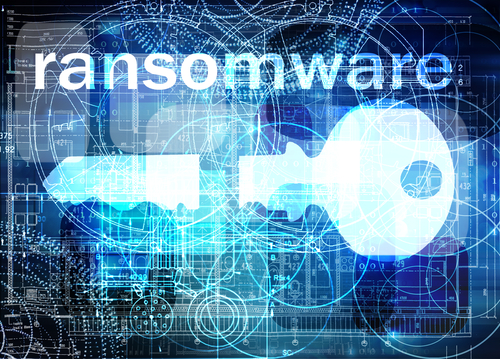
Ransomware has been a concern for internet users for some time now, but experts are predicting that the malware will affect more victims than ever before in 2014. As Warwick Ashford of Computer Weekly reports, hackers are producing malware kits that allow ransomware to be created more easily.
Ransomware is a type of trojan malware. It locks a computer or encrypts the data stored on it and demands a payment to unlock or decrypt it. The specific tactics taken are different from attack to attack, but usually victims find that their payment doesn’t restore their computer.
Researchers have discovered conversations on hacking websites about malware kits that make it easier to produce ransomware. These kits allow criminals without advanced knowledge of hacking to produce dangerous malware and even come with technical support. Kits can be used to produce all kinds of malware and the recent rapid rise of malware production is being attributed to their existence. Experts expect more ransomware to be produced with malware kits because it is an attack that directly leads to a payout, unlike other threats that require multiple steps to become profitable.
The best way to protect yourself from ransomware and other malware is to prevent it from infecting your computer in the first place. Be extremely cautious of untrusted email attachments and links in the body of emails. Try not to visit any untrusted websites and trust your browser when it warns you about potential dangers.
It’s also important to keep all applications, especially your antivirus program, updated. Backing up files is also helpful so that if some files are encrypted or damaged, you’ll be able to restore them.
If your computer is infected with malware, don’t pay a ransom. Bring your device to Geek Rescue, or call us at 918-369-4335.
November 27th, 2013
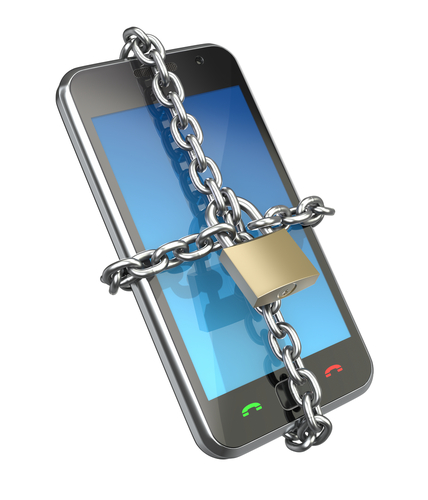
There are a number of reasons to focus more on security for your mobile device, or the mobile device of your employees. For personal use, 7-percent of smartphone owners have been the victim of identity fraud, which is a substantially higher rate than the rest of the population. For businesses, about two-thirds use the bring your own device model, but only about 4-percent manage the company data their employees access with personal devices. In both of these examples, the issues stem from a lack of mobile security. Eyal Manor, of Information Week, writes that companies must focus on the data being accessed by employees, rather than the devices themselves, to improve security.
Many smartphone users don’t keep their apps and operating system updated, which opens security holes. Many don’t use a passcode either. There’s more and more mobile specific malware being introduced every day. These would be reasons to institute mobile device management, but when employees are using their personal devices, it’s difficult for more businesses to demand that type of access and control. Instead, here are three ways to improve security by focusing on the data being accessed, rather the individual device.
This tactic takes all of business-centric data stored on an employees device and locks it down in a special, encrypted area. Rather than putting controls on the entire device, companies are able to control only the encrypted area allowing them to ensure the safety of company data.
Users may not have strict security in place to restrict who can access their device, but for company information enhanced authorization can be installed so that data isn’t compromised in the case of theft or a lost device. Similar to containerization, only vital company data would be stored behind additional walls, which would require an employees log-in information to get through.
Regardless of the other safety measures taken to protect data, if it’s not encrypted, it isn’t safe. Hackers are continually evolving their tactics to get past enhanced security, so data theft remains a possibility. If your data is encrypted, however, you take added precautions that stolen data can’t be accessed by a third party, and won’t come back to damage your company. Remember that encryption is important both for stored data, and for data being sent between two parties.
For help improving the security of your company’s data, call Geek Rescue at 918-369-4335.
November 26th, 2013
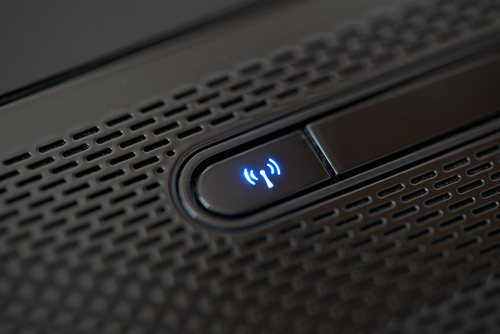
Wireless internet can be finicky. You may get a strong signal in parts of your house, but a weak signal in some rooms. You may also notice your connection seems to get slower over time, or you experience disconnects frequently. As Steven Scheck writes for Business2Community, there are fixes to these common WiFi problems. Here are some ways to improve your wireless internet experience.
There’s not much expertise needed to optimize your wireless internet connection, but some basic knowledge is helpful. For example, your router uses a channel, similar to a radio signal, to broadcast. If you are using the same channel as another router close by, it could cause interference. If you’re experience problems with your WiFi, such as a slow connection, try changing the channel in the router’s settings. Also, if you’re using a ‘g’ or ‘b’ router, it’s time to upgrade. These are typically older models with limited capabilities. Instead, upgrade to a ‘N’ router and you will see dramatically improved performance, such as a larger range and more reliable connection.
The physical location of your router has a significant impact on the quality of your connection. Each router has a limited range, so the closer you are to the router, the more likely you are to enjoy a strong connection. So, place the router in a central location in your home. Also, try to keep it away from devices that would cause interference, such as other routers, or even microwaves. Keep in mind when placing your router that signals are weakened when they pass through furniture and walls.
If you’re out of options and your wireless network still doesn’t provide a strong connection throughout your home, it’s time for WiFi Repeater. By placing Repeater in range of your router, you’ll enjoy a stronger signal from farther from your router’s physical location. The range of your router will be up to twice as large.
Being able to connect to the internet isn’t the only mark of a successful wireless network. Be sure you have the proper security in place. To do so, make sure you’ve changed the log-in information from the factory settings. Turn on encryption and MAC address filtering. Change the default SSID and disable SSID broadcasts. It’s also important to put a firewall in place for your router and PC.
These tips help you create a quality wireless network in your home. For help with your network, to improve security, or to fix broken or malfunctioning hardware, call Geek Rescue at 918-369-4335.
November 21st, 2013
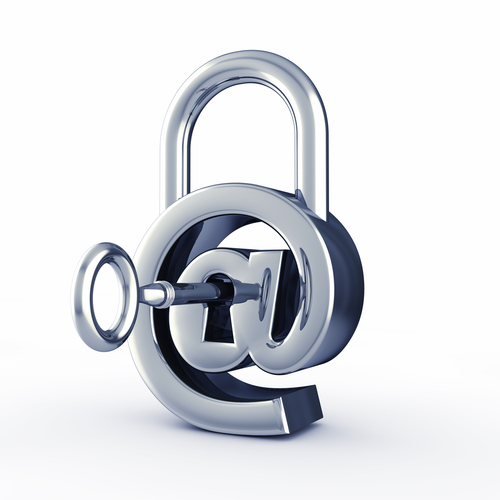
Spam emails began as a nuisance, but one that ultimately wouldn’t harm your computer. Since those early days, spam has evolved to be much more malicious. Now, spam often is the first step to infecting your machine with malware, trojans, keyloggers and viruses. Spam can be used to steal your identity and hold your computer for ransom. Jeff Orloff of The Email Admin posted some threats to be on the look-out for and some tips for how to stay safe.
Cryptolocker is the latest threat making headlines. The trojan is a form of ransomware that first surfaced in August. Most commonly, it stems from an email attachment that infects the victims computer when it’s downloaded. The cryptolocker is then able to encrypt certain types of files on your system and holds them for ransom. To decrypt the data, a payment is required. Often, there is a deadline that goes along with this demand for money. While some users report they’ve paid the ransom and their files were encrypted, others have paid and seen no results. Unfortunately, even professionals struggle to decrypt files that have fallen victim to a cryptolocker.
In less than a week, more than 12-thousand users reported being infected by a cryptolocker in the US. This isn’t the only threat to your security that strikes through email. Cryptolocker is just the latest.
Email security is essential for both your business or your home network. There are a number of options for enhanced email security, but regardless of what you choose, make sure it includes some vital features. Your security software should scan incoming email for known threats and separate those that are potentially harmful. Email protection has to be more intelligent than ever to properly protect you. Spammers are constantly updating their tactics to get around spam filters.
Geek Rescue offers a number of options to keep you safe from the latest cyber threats. Call us at 918-369-4335 to find out how we can protect you.
November 4th, 2013

What do you know about CrytpoLockers? As a post on the Integral IT blog reports, this relatively new form of computer virus is capable of gaining access to and encrypting files on your machine, which then makes it impossible for you to use them. In order to stay safe and minimize the damage, there are some precautionary steps that need to be taken.
CryptoLockers primarily gain access to your computer or network through email. They appear as a seemingly legitimate attachment. Once downloaded, they begin to wreak havoc.
Any file you have access to, a CryptoLocker will encrypt and damage. You’ll no longer be able to access these files. When you try to open them, you’ll be met with a warning that the file is corrupted and can’t be opened.
This warning is the first sign that you’ve downloaded a virus. Otherwise, the CryptoLocker operates in the background and is undetectable for most users.
To remove the virus, you’ll have to identify the file containing the CryptoLocker and delete it. Then, you’ll be able to restore the corrupted files from back-up, which you’ve hopefully kept current.
To avoid a catastrophic loss of data due to a CryptoLocker infection, keep a trusted, frequently updated antivirus program running on your machine. Allowing it to update constantly makes it more capable of detecting new threats like CryptoLockers before they do any real damage.
Be aware of threats like this when checking your email. Using attachments is a popular method of hackers for infecting a large number of users. Knowing this makes you more suspicious of emails containing attachments, especially when they’re unsolicited.
This is also a warning to keep your back-ups current and frequent. You’ll never be able to be immune to threats like this, so regularly backing-up vital files ensures that, even when disaster strikes, you’ll be able to recover quickly.
Geek Rescue offers security solutions for all of these issues and concerns. We remove existing viruses and malware, improve your security infrastructure to better protect against threats and offer data storage and back-up. Call us at 918-369-4335 to stay safe from threats like CryptoLockers.
October 23rd, 2013

The Bring Your Own Device trend is unavoidable. Because of the growing trend, cyber criminals are targeting mobile devices more. It’s more important than ever to properly secure smartphones and tablets since they’re now being used to access company data and valuable information.
Limiting the access each employee has is an important step to keeping your business from suffering a catastrophic data breach. As Laird Harrison, of Tech Page One, writes, there are also some device specifications that can be enabled to greatly impact security.
It’s shocking how many tablets and smartphones have no security on their lock screen. Considering how many hacking stories start with a device being lost or stolen, it’s a must to require a password to unlock. The use of Apple’s new biometric recognition is another good step.
When your device is dormant for an extended period of time, the screen should turn off and require a password to continue using it. This is called inactive time-out. Not only will it help to improve battery life, but it also makes the device harder to hack since it erases the possibility that a thief could find the device and use it without knowing the password.
By adding programs and enabling some options, you’ll be able to remotely view the data stored on a lost device. You’ll even be able to disable some applications and erase data that could be harmful in the wrong hands.
It’s a good idea to encrypt all data stored on mobile devices, but at the very least, encrypt company related information. There are a number of programs available that will effectively encrypt the most vital data on your device.
These are just a few options mobile users can enable on their device to make them more secure. If you’re using a personal device to store or interact with company data, these are certainly necessary precautions. Even if you’re only using your device for personal use, these are still good ideas.
For help increasing the security on any of your devices, or to recover lost data or fix a device that isn’t working right, call Geek Rescue. If it boots up or turns on, we fix it. Call us at 918-369-4335.
October 9th, 2013

Protecting your privacy when you surf the web is important. The NSA made headlines by invading internet users’ privacy, but they’re not the only ones trying to find out what you do online. There’s valuable data to be had for hackers, but advertisers are also interested in your search history and activity. Ian Paul, of InfoWorld, suggests three ways to protect your online privacy.
If you’re using public WiFi, you shouldn’t be accessing your bank account or any other online account you wouldn’t want another person to have access to. Free WiFi is fine for surfing public web sites and reading the news. For anything more substantial, you should wait until you’re on a protected network. If that’s not possible, think about investing in a virtual private network, or VPN. When using a VPN, the only information others can see is that you’re connected to the VPN. That even includes your internet service provider. Some VPN’s monitor your activity themselves, however, so do a little research before signing up .
- Use the cloud judiciously
Public cloud services like Dropbox and Google Drive are extremely helpful. You need to be careful about what you store and share there, however. These are public clouds, which means the data you’re storing is unencrypted. Anyone who breaks into your account will have access to everything you have stored on the cloud. Instead, consider using a private, encrypted cloud for your most sensitive data. One way is to encrypt your files before putting them on a public cloud, but a better option is to invest in a service with built in encryption.
Using a strong, unique password is a good way to protect all of your accounts online. It doesn’t make them hacker-proof, however. Many online accounts are offering 2-factor authentication, which makes it much more difficult for anyone else to access your account. To set it up, you’ll request a PIN from Google, Facebook or whoever your account it with. They’ll send it to you by either calling or texting the phone number associated with the account. You then enter that code with your password to verify that you are the owner. Now, only the devices you’ve authenticated in this manner have access to your account.
These techniques help keep you safe online, but no method is foolproof. Cyber criminals are continuously coming up with new ways to steal your information or infiltrate your accounts.
For help improving the security on your devices, call Geek Rescue at 918-369-4335. We not only fix broken and infected devices, we also help you keep them safe.
September 19th, 2013
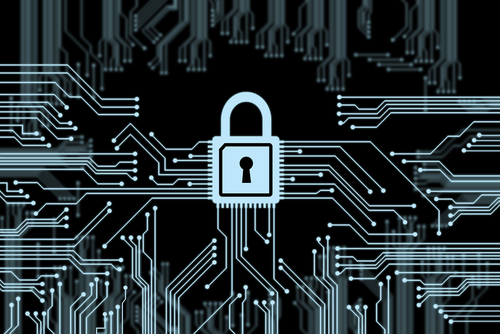
Everyone is interested in the silver bullet that will magically make them completely secure and afe from any cyber threat. It doesn’t exist, but as Thorin Klosowski points out at Lifehacker, there are a number of ways to become more secure within minutes.
By far the simplest and quickest way to improve security is to enable 2 factor authentication on your online accounts. With this more secure type of log-in, you’ll be prompted for your password, but you won’t be given access to your account until you’re given a second authentication method. In many cases, you’ll be texted or called with a code to enter to prove that you are who you say you are. Once you’ve gone through this process, a hacker would need to using your computer, or have your smartphone to gain access to your account.
A password manager can be added to practically any browser and will automatically log you into accounts that have been added to it. This actually sounds less secure, but the password manager locks away all your passwords and encrypts them so they’re safe. You’ll only need to remember one master password to use the password manager. Many managers will even generate a strong, random password for each site you wish to use with it, so the only way to log in to those accounts is by having access to the password manager.
Email encryption has some headaches associated with it. Most notably, encrypted emails require a key to read, so whoever you’re sending a message to will need the key. But sending them the key over email defeats the purpose of encryption. You probably don’t need to encrypt every email you send, but messages containing information like bank accounts, social security numbers or even contact information are good candidates for encryption. Just be sure to send the encryption key through text, or in person.
Backing up your files is always a good idea, but, just like email, it’s important to encrypt files containing potentially valuable data. There are a number of services that offer encrypted back ups, but one obstacle is that usually these encrypted files won’t be available to you on another machine. That means you won’t be able to access them from your smartphone or at work.
These steps will improve your online security, but nothing is unhackable. The idea is to make it as difficult as possible for anyone to access your data and accounts. Geek Rescue specializes in improving your cyber security to keep your information safe and your devices free from malware. Give us a call at 918-369-4335 to find out how to strengthen your security.
August 12th, 2013
![9 Tips for Keeping Your Internet Usage Private [Infographic] by Who Is Hosting This: The Blog](http://www.whoishostingthis.com/blog/wp-content/uploads/2013/07/9-Tips-For-Internet-Privacy-branded.jpg)
Infographic via WhoIsHosting
The key to security when surfing the internet expands well beyond having the best antivirus software installed on your machine. That is extremely useful in fighting off any malware and viruses you may pick up along the way, but it doesn’t take a proactive approach to protecting your data and personal identifiable information.
We’ve talked about how to surf invisibly and the problem with storing passwords with your browser. The included infographic illustrates not only the problems with some of the most utilized web tools, but also alternatives that keep your data more secure.
Here are some of the more noteworthy revelations.
- Incognito Insecurities- In Google Chrome, even using ‘incognito mode’ doesn’t stop the browser from using cookies and tracking your search history. Chrome then uses that data to sell to advertisers, which means going incognito doesn’t help nearly as much as you’d think.
- Encryption For All- The value of encryption can’t be overstated. In order to protect your email, encryption is a much needed tool. Regardless of the type of email you use, encryption is an option and one you should be using.
- There’s Always An Alternative- No matter what you are interested in doing online, there is an alternate option that offers more security than what most people are using. For file storage, chatting, email, browsing, video viewing and more, you don’t need to stop doing it, just find a better way.
Keeping your data and information private and secure goes a long way to keep your identity and computer safe. To heighten the security around your data, contact Geek Rescue at 918-369-4335. We will match your needs with security solutions to keep you safe online and help you understand how to safely surf the web.














![9 Tips for Keeping Your Internet Usage Private [Infographic] by Who Is Hosting This: The Blog](http://www.whoishostingthis.com/blog/wp-content/uploads/2013/07/9-Tips-For-Internet-Privacy-branded.jpg)





